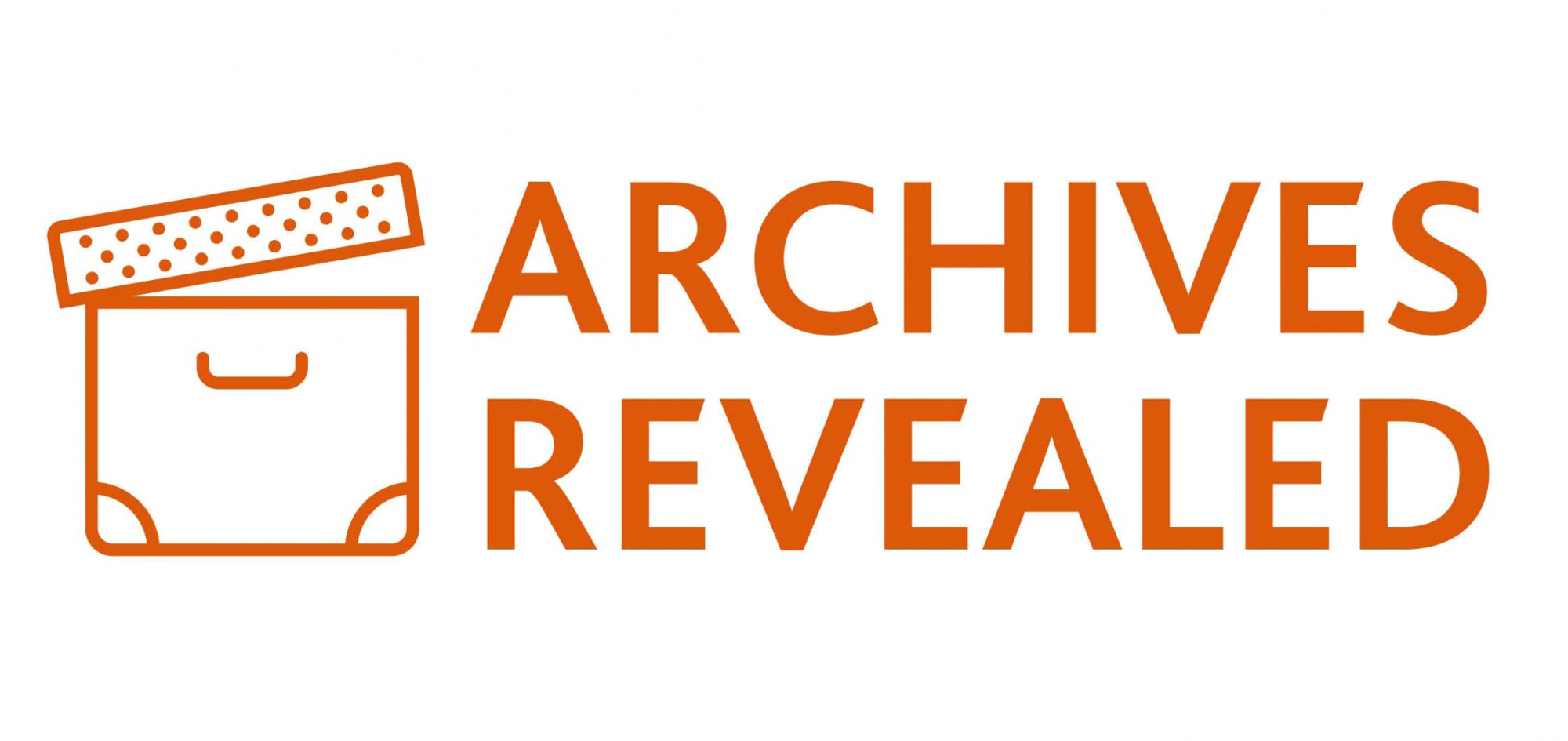This month our Conservator, Cath Mayo, shares some insights into the murkier side of her job.
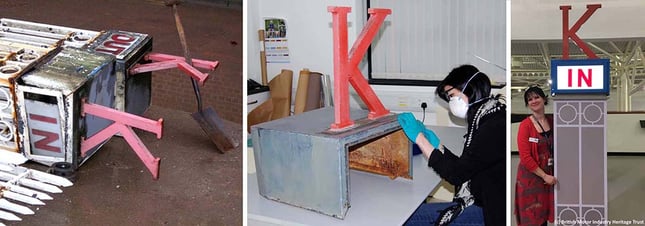
Working with industrial artefacts: It is a complex job to take an artefact such as K Gate (shown on the left shortly after being dismantled at Longbridge) through the conservation process to make it safe and ready for display.
I am now coming to the end of my MA degree in Preventive Conservation and just about to enter the fun of writing my dissertation. It's been a great couple of years and I've
learnt so much from my studies. The reason that I am mentioning this is because part of my degree has involved completing a work based placement, which I decided to base on
my work in the BMIHT Archive.
The area I chose to focus on was the very important Longbridge Collection which includes items rescued from the factory by the Trust over a prolonged period after the
closure of the Longbridge factory in 2005. It consists of both paperwork and a wide range of artefacts, from cigarette bins to flags, but the items in most urgent need of
attention were the objects. As you can imagine, different strategies are needed for different things; what’s a good environment for a textile flag, wouldn’t be good for
something made of corrosive metal! This presented a perfect project to work on for my placement module, and so I decided to plan how I would tackle it.
Before I begin, you may be wondering what 'Preventive' conservation is? There are two different aspects to conservation; interventive and preventive. Preventive is what needs
to be done to stop things from deteriorating and interventive is what happens when the preventive measures haven’t been in place, or have failed. At present, the Longbridge
artefacts are all safely stored, but as with all museum/archive objects, constant monitoring and vigilance are needed to make sure that they are properly looked after.
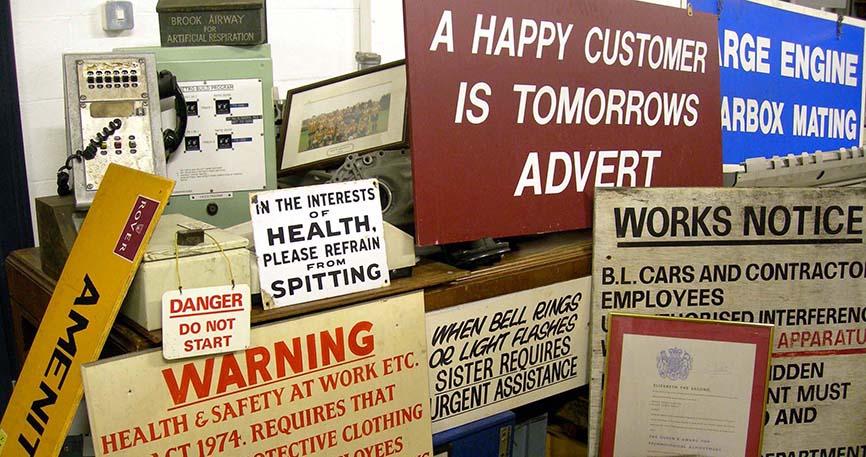
A small selection of objects from the Longbridge Collection.
The first stage of the project was to work out exactly what I was dealing with and so an appraisal of all items in the collection took place; this recorded what items were, what
they were made from and any areas of damage. Just to put it in perspective, there are approximately 1000 objects in the collection, including a great deal of signage from the
factory. A lot of these items had been well-used over the years and not in the best condition, so this needed to be taken into consideration when coming up with any recommendations.
After the appraisal, I started to look at how the collections were stored; there were several things to take into account, including the levels of relative humidity,
temperature, light levels, whether there were any pests present and anything else that may be threatening the collection’s safety.
Relative humidity is the measurement of the amount of moisture held in the air; too much will cause rust, mold and swelling of organic fibres, too little causes drying out and
a breakdown of material (depending on what it is). There are guidelines for these levels, but it is very important to keep the levels as constant as possible; fluctuations can be
very damaging and should be avoided. Light levels can present problems too if they are not controlled. Light is very damaging to pretty much everything and ultra-violet needs
to be completely eradicated if possible. Pests tend to live where they are given a nice environment to eat, sleep and procreate. The Archive repository doesn’t tend to get an
abundance of pests, but has had evidence of silverfish. Silverfish enjoy eating cellulose based materials – especially paper, so archives are one of their favourite places to be.
With all of this in mind, I made a start on coming up with some recommendations for the collection and some ways of ensuring the preservation of these important artefacts.
.jpg)
Cath uses a whirling hygrometer to check humidity levels.
Environmental levels are monitored in the archive by using a data logging sensor system that feeds data back to a standalone computer system. This information can be viewed
in graph form making it easy to spot any changes. To start with everything seemed rather calm as far as the readings were concerned. This trend continued, until I moved
the sensor after a couple of weeks to look at another part of the collection towards the back of the archive. It was at this point that I noticed on several days that there was a
spike in the RH at about the same time on some days. This was a puzzle, as there wasn’t anything obvious to cause this nearby and also the temperature readings were remaining
completely constant; usually there is a change in both levels in this kind of situation. A bit of detective work again showed nothing of note. I checked adjacent rooms, all of
which didn't point towards any issues. The final thing to look at was what was above the area; the kitchens and café are located above this part of the archive, so it seemed fairly
obvious that this was the cause of the spike; probably from cleaning the floors later on in the day or something like that.
So, how was I going to sort this problem? Well, the easiest way to rectify it would have been to move objects affected by the fluctuations away from that area. Space is at an
absolute premium in the archive and there was no option to move the whole collection to a different part of the store. I had to come up with a plan, so decided to look at which
materials suited which areas of the racking the best. Organic based objects are happier with constant level areas; this is because they are hygroscopic and react to changes in
RH. Recommendations to move all organic objects to the centre of the racking was made. Metal based items like dryer conditions, especially if they are corrosive in nature;
the last thing anyone wants is rusty rivets! The levels towards the bottom of the racking were dryer, so this was the recommended place for these objects.
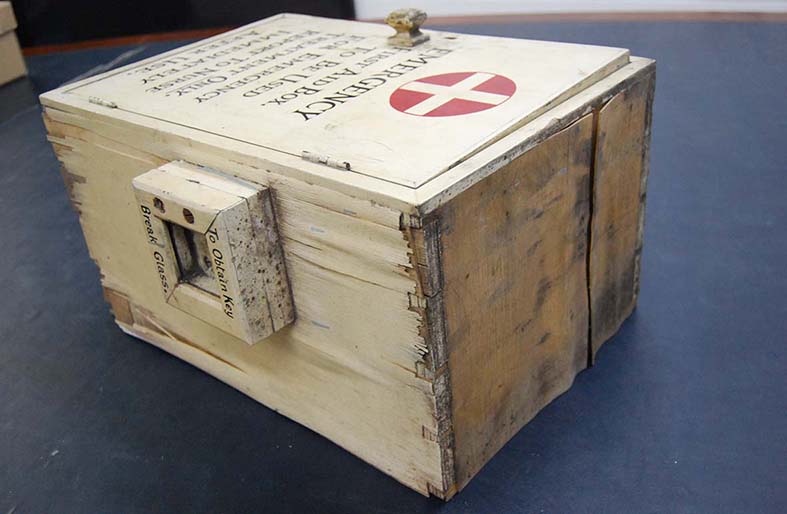
An example of the condition of some of the objects before they reached the BMIHT Archive. This emergency first aid box is showing several types of damage, including mould and shrinkage on the base, and delamination of the wood on its sides.
With a plan in place to help with the effects of the environment, I moved on to look at the pest activity in the area. To find out what kind of pests were present, I placed a
blunder trap under the racking; these are sticky traps that catch insects when they walk across them. It wasn’t until about the 3rd week that I found a silverfish in the trap.
Again, another puzzle as silverfish prefer damp dark conditions. The archive's environment is certainly not high in RH, but there are definitely lots of dark nooks and
crannies to hide in. They also enjoy munching on cellulose based objects, especially paper, which in an archive, there’s quite a lot of. All documents in the archive are
housed in polyester enclosures however and stored in archival standard acid free boxes, so all protected. Cleaning recommendations were made and again, only metal artefacts
recommended for the bottom shelving. I also researched materials that could be used to cover and protect the objects making it even harder for the munchers to eat anything.
I have to say, it has been a fascinating 8 weeks looking at the Longbridge artefacts. It's been great to be given the opportunity to get some hands on experience with this kind of
collection, which is eclectic, interesting and important. We are intending to move forward and implement the recommendations of my report, so it'll now be possible to protect and
preserve the collection for many years to come.
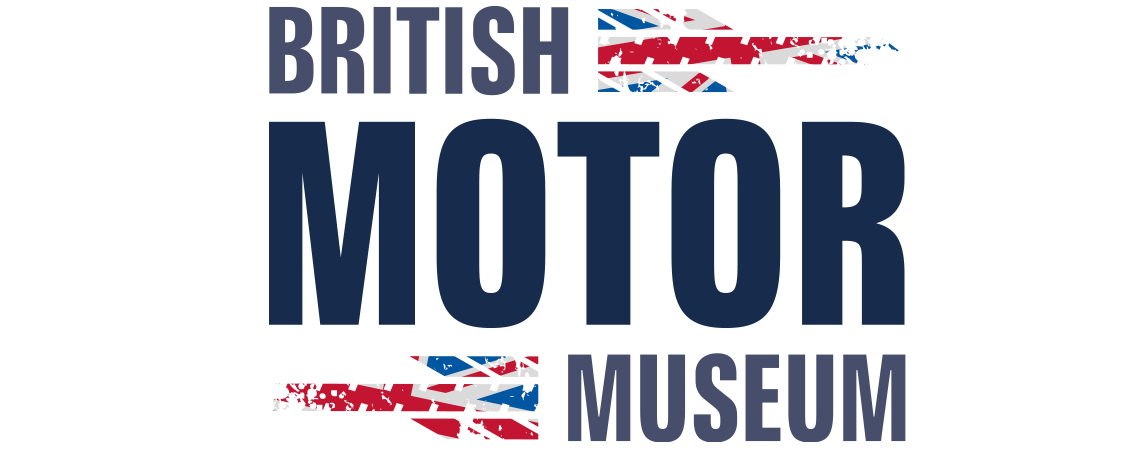





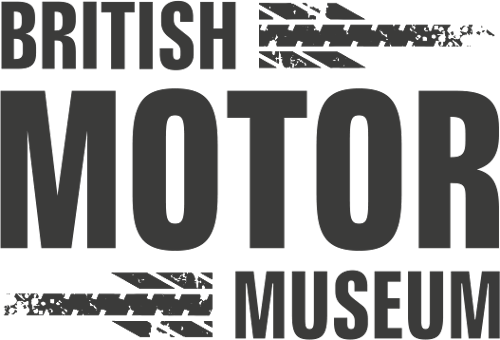

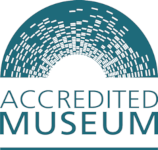












.png)


